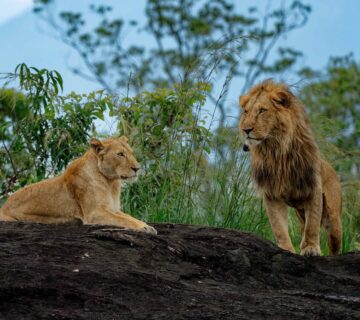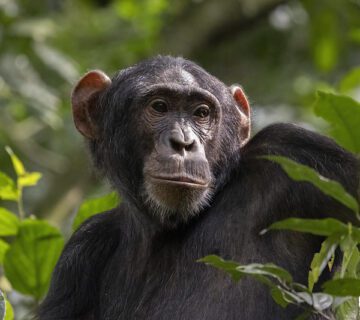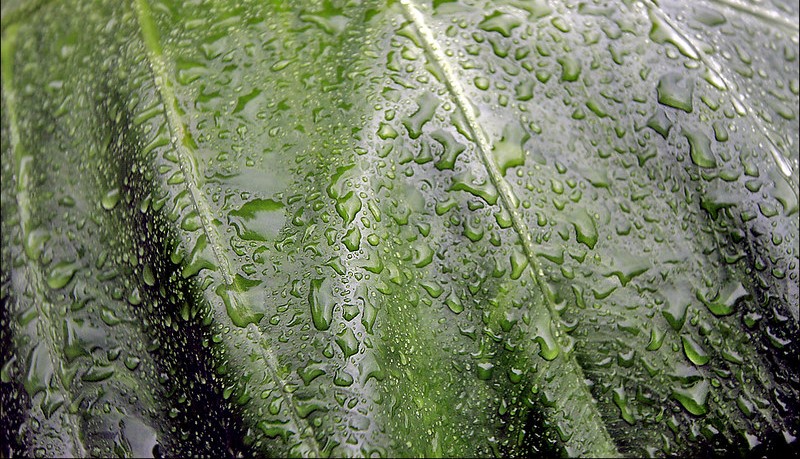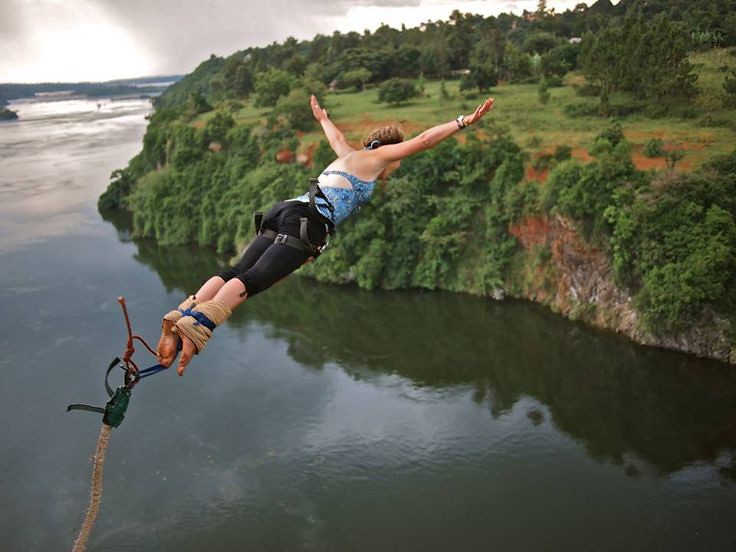Historical and Cultural Tourism Sites in Uganda: When most people think of Uganda, they think of animals. However, the Republic of Uganda has recovered from numerous adversities and is today a prosperous nation that can demonstrate its rich history and natural beauty. Some of the historical tourist places that you might want to see on your Uganda safari are listed below.
The Uganda Museum
The Uganda Museum was created to aid in the preservation of Uganda’s history. The museum is without a doubt the best location to learn about Uganda’s history and cultural heritage. A collection of instruments, artefacts, and recordings illustrates this history and legacy. The Uganda Museum was built in 1908, although it has undergone a number of internal modifications to give it a more contemporary appearance. There are a variety of instruments and methods available to illustrate or demonstrate what Uganda was and is. Musical instruments, traditional weaponry (spears, arrows, and bows), drums, and archaeological artefacts are only a few examples.
Uganda Martyrs Shrine
The Namugongo Martyrs Shrine is one of Africa’s most visited religious destinations. Every year on June 3rd, millions of pilgrims go to the shrine to remember the martyrdom of 25 Anglican and Catholic Christians who refused to abandon their faith even in the face of death. Kabaka Mwanga II of Buganda ordered the execution of numerous Christians in 1886, believing that they had lost respect for him after adopting Christianity. Foreign religions posed a challenge to his power and control over his people, according to him. Several Christians of various faiths were ruthlessly murdered on the king’s orders in an attempt to stamp his authority. In Uganda, June 3rd is a public holiday, and both protestants and Catholics visit their respective martyrs’ sites.
Kasubi Tombs
The graves are one of Buganda’s most important assets. The graves are located around 6 km from Kampala’s city core. The tombs are a UNESCO World Heritage site that attracts (or used to attract) thousands of visitors each year. It is easily accessible from Makerere University along the route to Rubaga and Mengo. The Kasubi tombs are the primary burial sites for Buganda’s kings (Kabakas) and other royals. Mutesa II, Mwanga II, Daudi Chwa, and Mutesa I are among the Buganda Kings buried in the graves. Although the tombs have been damaged by fire in the past, they have withstood the test of time and are now renovated and available to tourists.
Kings palace mengo
The Lubiri (palace) at Mengo was one of the residences of Buganda’s Kabaka (king). It is four square miles in size and boasts outstanding colonial architecture. The palace was erected in 1885 and is thus an excellent destination to visit if one is interested in knowing more about the Baganda kingdom’s history. The current Kabaka no longer utilises this palace, which was attacked by President Obote’s government forces during his father Muteesa II’s rule. During the week, visitors are welcome. Buganda’s main parliament, locally called Bulange, is located just across from the palace. You might attend one of the legislative sessions to see how the Buganda elders address matters concerning the kingdom.
Kabaka’s Lake
This lake is located near the palace at Mengo, on the outskirts of Kampala. The lake was formed in 1880 on the instructions of Kabaka Mwanga II to provide an escape route across Lake Victoria in the event of a civil conflict. The lake is five acres in size and has tranquil waters that are home to magnificent birds and other fauna. Kabaka Mwanga used to swim and fish at the lake throughout his stay there. However, the Kabaka’s aim of building a passage to Lake Victoria was not realised, and the lake remains isolated. Visitors may swim, sport fish, or simply rest along the gorgeous coastline.
Namirembe and Rubaga Cathedrals
Namirembe Cathedral is the most significant cathedral in Uganda for Anglicans, whereas Rubaga Cathedral is for Roman Catholics. The Rubaga church was erected in 1880 on the summit of Rubaga Hill, while the Namirembe Cathedral was built in 1903 on the top of Namirembe Hill. The two Christian denominations’ top posts are held by both cathedrals. It is home to their most senior bishops. Every Sunday, Christians from all across the city and country flock to the cathedrals to worship in the hallowed spaces. The cathedrals also feature cemeteries and tombs for previous priests and bishops who came to Uganda as missionaries during the early days of Christianity, making them one of the Uganda Historical and Cultural Tourism Sites.
Baha’i Temple
The Baha’i Temple in Uganda is Africa’s only one of its sort. It is quite popular among both domestic and foreign tourists. The striking temple is situated on a 30-hectare plot of ground near Kikaya Hill (Kampala). It offers lovely grounds that are perfect for relaxation and meditation. All religious organisations are welcome at the Baha’i temple. The temple is a one-of-a-kind architectural structure with windows that can filter sunlight. Visit this temple to learn about the Baha’i faith, worship, or simply rest on the magnificent grounds with stunning views of Kampala.
Fort Baker/Fort Patiko
Baker’s Fort, also known as Fort Patiko, is located around 29 kilometres from Gulu town. This facility was created by Arab slave dealers during the time of slavery around the globe as a place where they picked and purchased captives who were then transported for servitude. During his voyage to explore the Nile, Sir Samuel Baker observed slavery, which he promptly opposed. Samuel Baker was a well-known explorer who took over the fort in 1872 in an attempt to frustrate Arab traffickers who had used the fort to capture slaves from the vicinity.
The fort is surrounded by a 15-foot-deep, 16-foot-wide trench. Slaves who had been taken by Arab traders excavated the trench. Baker used the Port until 1888 when Emin Pasha and Charles Gordon took over. The Fort serves as a permanent reminder of the miseries of slavery, with black markings around the stones said to be blood from slaves decapitated because they couldn’t make it to Egypt for sale.
Bigo bya Mugenyi
This cultural site is located in the Mubende District, in the village of Ntusi. Bigo bya Mugenyi translates as “The Fort of a Stranger.” The Bachwezi demi-gods are thought to have resided in the area hundreds of years ago. They left various artefacts and earthworks that are culturally significant to the locals. The earthworks are thought to have been constructed in the early 13th century. This location is extremely distant and requires much persistence and patience to reach. The roads to the site are not properly paved and, depending on the season, might be dusty or muddy.
Mparo Tombs
The Mparo Tombs are located in Hoima District, about 4 km from Mparo Division. The tombs are where past Bunyoro kings are buried. The renowned Kabalega of Bunyoro, who caused problems for the British colonial authorities, is buried at Mparo tombs. For a long period, Kabalega led a rebellion against the British, who were attempting to take control of his kingdom. He was deported to the Seychelles Islands alongside Kabaka Mwanga of Buganda. Many locals visit the Mparo graves to seek favours or to respect their past ruler.
Karambi Tombs
These graves may be located in Fort Portal. The graves are the property of the Kingdom of Tooro. Three Tooro kings are buried here: Olumi Kaboyo II, Rukidi III, and Kyebambe Kamurasi. Each king has his own tomb, complete with all of his royal regalia. Other royal princesses are buried here as well. The Karambi Tombs have enormous cultural value to the Batooro and are hence an excellent place to learn more about their culture and kingdom. The modest but unique architecture and regal instruments, such as enormous drums, spears, and other objects that were special to the single King, will impress you.
The surroundings of the graves are lovely, with numerous enormous mango trees spread throughout. There are plans to modernise them in order to create money for the Kingdom of Tooro. The Karambi tombs are 6 km from the town centre along the Kasese to Fort Portal route, which is also a Ugandan historical and cultural tourism site.
Ssezibwa Falls
The Ssezibwa Falls are located in Mukono, between the parishes of Kyagwe and Bugerere. The waterfalls are a significant cultural and spiritual destination for the Baganda people, particularly royalists. Buganda’s Kings have all visited the Sezibwa Falls to seek blessings from their ancestors. Aside from the royals, hundreds of people visit a temple on top of the falls to seek the gods’ blessings and favour. Many people visit the falls and are awed by the stunning nature that surrounds them. Rock climbing, prime viewing, birding, picnicking, and camping are all options in and around the falls’ magnificent gardens.
Nkokonjeru Tombs
These graves may be located in Mbarara District, in the Kakiika region. It is the final resting place of two past Omugabes (kings) of Ankole, as well as other royal family members. The tombs include the ashes of Rutahaba Gasyonga II and Edward Solomon Kahaya II, as well as nine additional royal burials.
Nakayima Tree
This tree may be found in the Mubende District. It is thought to be about 400 years old and is one of Uganda’s largest trees. According to legend, the tree was planted by the wife of a specific Nduhura named Nakayima. People would travel to the tree to ask their gods for blessings and favour as they faced life’s trials. People still go to the tree for blessings to this day. On their route to Kibale Forest National Park, tourists can stop at this traditional site. Going on a communal stroll or ascending the hill to visit the major shrine is the main activity.
Expect to encounter a large number of folks who have come to ask for blessings for their children and families. Local beer and animals are often brought to be sacrificed to the tree. The location, which is also one of Uganda’s historical and cultural tourism sites, is maintained and operated by witchdoctors who are always in a trance, meditating and interacting with the spirits.
Katereke prison ditch
This ditch serves as a continual reminder of Buganda’s Kings’ savagery. In the face of criticism from his siblings, Kabaka Kalema chose to do the unthinkable. He kidnapped all 30 of his brothers and sisters and imprisoned them in a ditch until they all died of starvation. The Katereke Prison Ditch is a reminder of the Buganda Kingdom’s terrible times as well as the cruelty of Kabaka Kalema. Despite its association with the violence of the paranoid king, the place attracts a large number of international tourists and is one of Uganda’s historical and cultural tourism sites.
Naggalabi Coronation Site
This location is in Busiro Country, on Buddo Hill, some sixteen kilometres from Kampala. Naggalabi is where Buganda’s kings are crowned, following a series of preparations and rites. Some say the Buganda monarchy was founded here in the early 14th century. Tourists can walk in the footsteps of the current and previous Buganda rulers when visiting this coronation site. Visitors can also visit some of the area’s other holy places.
Itaaba Kyabanyoro
This location is a short distance from Mbarara. The location is significant in Ankole Kingdom history because it is where the final emperor (known as Wamala) of the Bachwezi empire constructed the sacred royal drum known as “Bagyendanwa.” The drum is still in use today and is one of the Ankole kingdom’s most respected cultural emblems. To get to this location, use the Mbarara to Kabale route and exit at Kinoni Rwampara.
Nyero rock painting
You must travel to the eastern portion of Uganda to see the Nyero Rock drawings. The paintings are placed along Ngora Road, 8 km from Kumi town. The incredible artwork was left behind by people who lived in the region during the Iron Age. The paintings depict a variety of symbols, including boats and animals that used to wander the region.
Kanyange and Nnamasole Baagalayaze Tombs
These graves house the bones of Kabaka Suuna II’s mother, who was interred at the Wamala tombs. Nnamasole Kanyange was her given name. The graves are placed on a hill along the Kampala-Bombo route, quite near the Wamala tombs. The Nnamasole Tombs also house the bones of Kabakas’ mothers. Traditionalists typically execute ritualistic rites in royal graves, as they do in other royal tombs. A holy drum, said to call the ghost of King Suuna II, is placed beside the graves.
Wamala Tombs
Buganda has more graves for its former monarchs than the Kasubi monuments. Kabaka Suuna 11’s bones are housed at the Wamala tombs. Kabaka Suuna is recognised as the first Kabaka (King) to open Buganda to foreign commerce. He had nearly 150 women, who bore him 218 offspring. The Wamala tombs are erected on top of a hill with beautiful scenery, and it is also one of Uganda’s historical and cultural tourism sites.
Igongo Cultural Centre
This is a privately owned cultural centre in Mbarara District, along the Kampala-Kampala motorway. The Centre is situated on the grounds of the old King of Ankole’s palace. Mr. Tumusiime developed this centre to promote Ugandan and African culture in general. There is no better location to learn about Western Ugandan culture than at the Igongo Cultural Centre.
The centre was built to excellent standards, with lovely gardens and vistas. The centre houses a museum, a café, and a lovely artisan shop. Indigenous dictionaries and literature on Uganda and the indigenous tribes may also be purchased in Western Uganda. Igongo is a popular stopover for travellers travelling to Queen Elizabeth National Park and Bwindi Impenetrable National Park to do gorilla trekking. If you wish to spend more time at the centre, you can reserve a stay in the centre’s hotel or pitch a tent at the approved campsite.
Amabere Ga-nyinamwiru caves
These caverns are located around 10 kilometres from Fort Portal town in western Uganda. Nyinamwiru Amabere. This translates as Nyinamiwiru breasts. The origins of this location are veiled in myth and mythology. According to legend, King Bukuku of the Toro and Bunyoro kingdoms had a daughter named Nyinamiwiru who had her breasts severed after refusing to marry the man her father picked for her. Many visitors to the cave nowadays may observe stalactites that look like breasts, with water dripping from them and depositing white calcite. The water, according to the local guide, is breast milk pouring from Nyinamiwiru’s breasts, which is also one of Uganda’s historical and cultural tourism sites.
Ndere Troupe Cultural Centre
This centre is located in Ntinda, a Kampala neighbourhood. Ndere is derived from the Kiganda word “endere,” which refers to a flute. The Ndere Troupe Cultural Centre is undoubtedly the greatest site to learn about Ugandan culture in general. Traditional performances from tribes around Uganda can be seen here. Aside from learning about the culture of Uganda’s tribes, you may order traditional dishes from practically every region in the nation. The Ndere Troupe Cultural Centre draws a large number of visitors. If you are visiting Kampala or doing a cultural tour of the country, this is the place to be. You won’t have to worry about lodging because they provide enough lodging at a reasonable cost.





